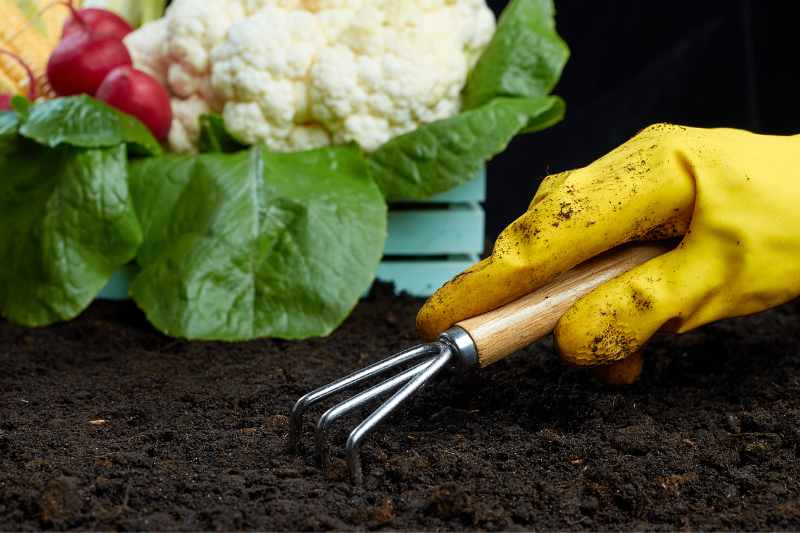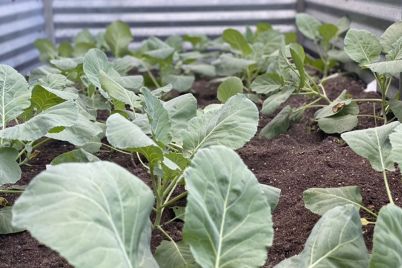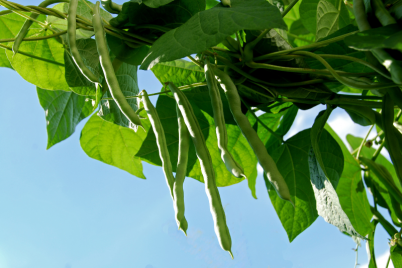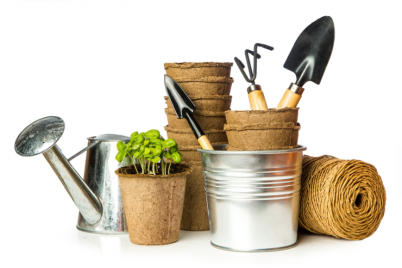Since healthy soil is a significant focus for vegetable gardeners, you need to understand what makes and keeps it healthy to improve your potential for gardening success.
Organic Gardening for Beginners
Since most vegetable gardens are soil-based and not hydroponic (water-based systems), healthy soil is a major focus for vegetable gardeners. We need to understand what makes and keeps soil healthy so we can improve our potential for gardening success.
Healthy soil has equal amounts of coarse sand, organic matter like compost, fine silt, and clay. Healthy soil is loose enough to allow roots to “breathe” but dense enough to hold water and nutrients. When it’s moist, healthy soil should hold its shape when formed into a ball and crumble when broken apart. It should not slip through your fingers.
Healthy soil is also a living thing. In one cup of healthy soil, there are millions of bacteria and fungi, hundreds of insects, good and bad nematodes, and worms. Theirs is a symbiotic relationship; together, they build good soil over time by consuming organic matter, excretion, and ultimately decomposing. This life cycle builds healthy soil, and since the soil is alive, organic matter must be added periodically to keep the cycle running.
Healthy soil for vegetables also has a neutral to slightly alkaline pH of six to seven and a half. Healthy soil, as described above, will develop and maintain a neutral pH naturally over time. Again, regularly adding organic matter is part of the process.
Unfortunately, most soil in Pinellas County is dirty sand, also known as Myakka. It has poor drainage, few nutrients, and doesn’t hold water. It is also generally acidic. This soil will not grow vegetables easily, and those that grow will be weak and more subject to disease.
What should a new gardener do about acidic sandy soil? Condition it with organic materials. But what do most new gardeners do? Too many skimp on this part because it can be pricey and time-consuming.
I recommend that you start small and don’t skimp on soil conditioning!
A small 2’ wide x 6’ long and 12” deep garden bed represents 12 cubic feet of soil. Plan on replacing up to 50 percent of the bed with compost, good garden soil, and worm castings. I purchase all of my soil by the cubic yard at All American Landscape and worm castings from Laica Worms and Vermicast. Both are St. Petersburg-based companies.
You can make your own compost, but composting takes time. You may need to purchase compost and garden soil from a nursery or big box store to get started. The best compost is home-grown, so plan on starting one to support your garden.
Here is my recipe for creating an immediate in-ground garden bed:
- Remove everything currently growing in the area. Weeds are tenacious, so be sure to remove all of the roots.
- Remove the top few inches of dirty sand and set it aside. This will be added back into the garden bed.
- Remove and discard the next six inches of sand. Using a shovel or garden fork, break up the sand at the bottom of the pit you have created.
- Backfill the pit with the soil you set aside, plus the compost, garden soil, and worm castings. You will need three cubic feet of compost and three cubic feet of new garden soil to replace the discarded sand. Most bags of compost or garden soil are sold by the cubic foot, so this will be an easy calculation. Worm castings are added like fertilizer: a little goes a long way.
- Add the recommended amount of organic fertilizer for the size of your bed.
- Completely mix this combination and water thoroughly. Let it settle for at least a few days or until you are ready to plant.
- Thoroughly mix and water the bed one more time before planting.
- Seeds or seedlings are best planted in pre-watered beds and kept moist until established.
Starting a new garden bed with conditioned soil and continuing to add organic matter is the best approach for gardening success. Here are a few tips for gardening success.
Tip 1: Covering freshly turned soil with mesh fabric will prevent squirrels from digging and cats from using this as a litter box. Once you plant seeds or seedlings, cover them with the fabric for the same reason, removing the mesh in a few weeks.
Tip 2: Moist does not mean drenched. Drenched soil will drown young seedling roots and dislodge seeds.
Tip 3: Be gentle when watering a new garden bed. Using a full nozzle spray will also dislodge new seeds and can damage young, developing roots. Sprinkling is best.
 Real estate agent Joyce Woodson loves gardening and sharing what she knows. The founder of “Straw Hat Gardening,” she has taught classes on basic organic gardening and provided garden consultations. To reach Joyce, email gardening@joycewoodson.net.
Real estate agent Joyce Woodson loves gardening and sharing what she knows. The founder of “Straw Hat Gardening,” she has taught classes on basic organic gardening and provided garden consultations. To reach Joyce, email gardening@joycewoodson.net.








